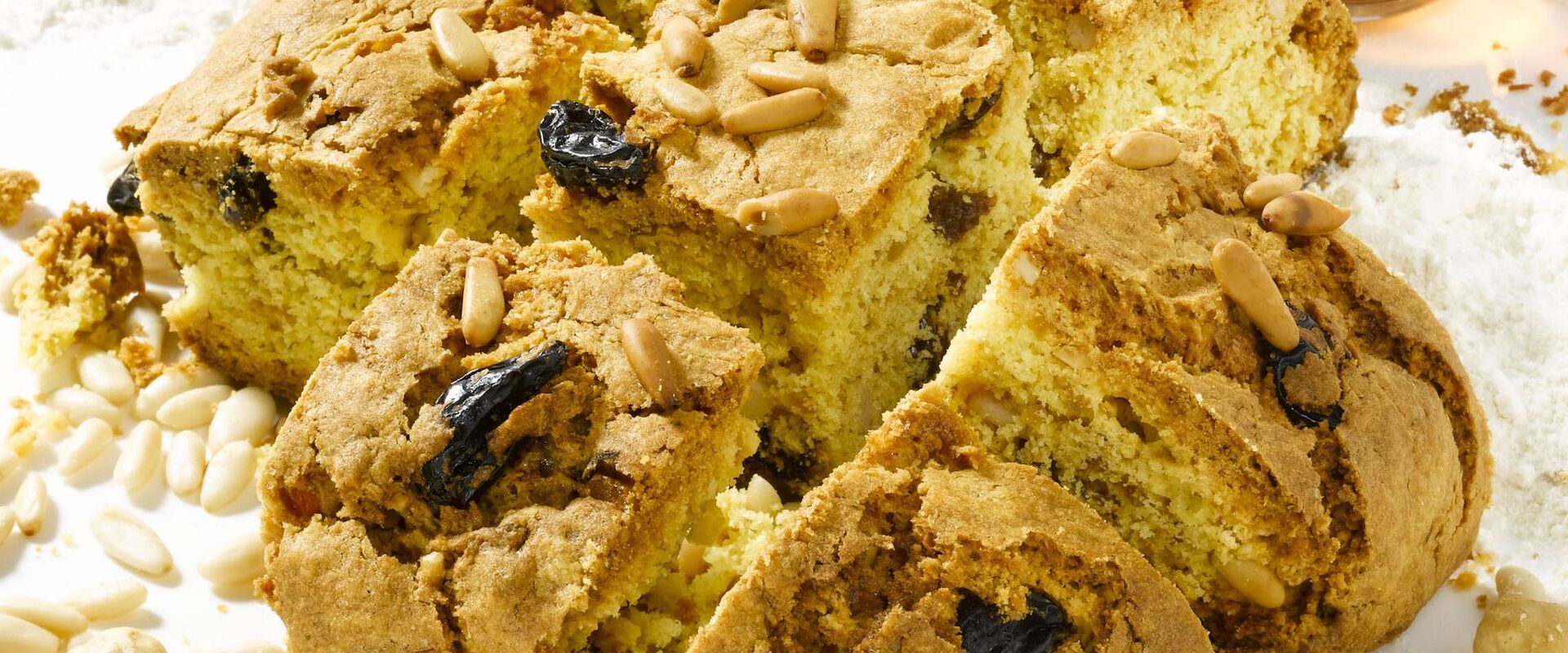Recipe: Panettone… Genovese
2016-12-26
There are numerous legends about the birth of
Panettone, Italy’s best-known
Christmas cake. Two of these may well be true.
According to the first of these legends, Panettone was created by
Messer Ughetto degli Atellani, a medieval falconer. He lived in the Contrada delle Grazie in Milan, and when he fell in love with Algisa, the beautiful daughter of a baker, he asked to be taken on as an apprentice in her father’s bakery. To impress the girl, who didn’t pay him much attention, and his future father-in-law, he invented a sweet bread which was an instant success. And of course Messer Ughetto conquered them all, including Algisa…
The second legend is set in the late fifteenth century, and names the inventor of Panettone as
Toni, a scullery-boy who worked for Ludovico Sforza’s cook. When the cake made for a sumptuous banquet was burnt, Toni saved his boss from disgrace by serving bread he himself had made from whatever he could find in the pantry. The Duke and his guests loved his creation, and when asked what it was called, the cook replied that it was Toni’s bread: “Il pan del Toni”. Which of course became “panettone”.
Genoa has another version of Christmas cake,
Panettone Genovese or
Pandolce, known as
Genoa Cake abroad.
The
This is a
medium difficulty recipe. It takes
an hour and a half to make the cake (thirty minutes to mix it and an hour to bake it).
Here are the
ingredients for four: flour (170 grams); sugar (65 grams); butter (65 grams); raisins (50 grams); pine-nuts (20 grams); egg (one); hazelnuts (20 grams); candied fruit (20 grams); baking powder (5 grams); salt (to taste).
To make it: Beat the butter, softened at room temperature, with the sugar. Add the egg and then sift in the flour with the baking powder and a pinch of salt. Gently work in pine-nuts, cubed candied fruit, ground hazelnuts and raisins which have been soaked in water for fifteen minutes and then squeezed. Form the dough into a ball, flatten it a little and place it on a cookie sheet covered with oven paper. Bake at about 170°C for 50-60 minutes.
Panettone Genovese seems to have
Persian origins: when dawn rose on the first day of the new year, the youngest of the king’s subjects brought him this sweet bread enriched with dried fruit, honey and candied fruit to wish him well.
In Liguria, even today the
youngest member of the family brings Pandolce to the table after Christmas lunch. And removes the sprig of bay leaves, a symbol of good luck and prosperity, from its top.
Mariagrazia Villa
Recipe: Chef Mario Grazia (
Academia Barilla).
Source: Academia Barilla (ed.),
Cucina Italiana. I grandi classici della nostra tradizione, Edizioni White Star, Novara, 2012.
